 |
 |
 |
| |
Better HIV control with dolutegravir than efavirenz started late in pregnancy / "RCT of dolutegravir vs efavirenz-based therapy initiated in late pregnancy: DOLPHIN-2"
|
| |
| |
Conference on Retroviruses and Opportunistic Infections (CROI), March 4-7, 2019, Seattle
Mark Mascolini
A significantly higher proportion of women starting dolutegravir than efavirenz late in pregnancy reached a viral load below 50 copies at delivery [1]. Three infants infected with HIV during the South Africa/Uganda randomized trial apparently picked up the virus in utero.
The international team that conducted this trial noted that one fifth of HIV-positive pregnant women in South Africa begin antiretroviral therapy (ART) in the third trimester. This late start confers a 7-fold higher risk of mother-to-child HIV transmission and leads to doubled infant mortality in the first year of life.
The DOLPHIN-2 trial enrolled women 18 or older who tested positive for HIV and pregnancy at or after 28 weeks gestation. The trial excluded women who had used ART in the past 12 months or had ever taken an integrase inhibitor. Women with a previous nonnucleoside failure or efavirenz intolerance could not enter the trial. The primary efficacy endpoint was a viral load below 50 copies at delivery.
The trial randomized 256 women from South Africa or Uganda, assigning 130 to dolutegravir and 126 to efavirenz. The intention-to-treat population included 249 women, 126 on dolutegravir and 123 on efavirenz. Baseline demographic and HIV variables were similar in the two groups: median age 28, estimated gestation week 31, previous live births 2, and median CD4 count 446. Pretreatment viral load was similar in women assigned dolutegravir (median 4.4 log10, interquartile range 3.6 to 4.7) and efavirenz (median 4.6 log, interquartile range 3.9 to 4.8).
In an intention-to-treat analysis, at delivery 73.8% of women taking dolutegravir and 42.6% taking efavirenz had a viral load below 50 copies, a highly significant difference (P < 0.0001). Women randomized to dolutegravir had a two thirds higher chance of reaching an undetectable viral load at delivery (RR 1.66, 95% confidence interval 1.32 to 2.08, P < 0.0001). This association did not change substantially in a multivariable model adjusted for baseline viral load (above or below 100,000 copies), baseline CD4 count (above or below 200), gestation at enrollment (above or below 36 weeks), maternal age, or country.
Among women with an initial viral load above 100,000 copies, 44.4% assigned to dolutegravir and 14.3% assigned to efavirenz had a sub-50-copy viral load at delivery, a difference that approached statistical significance (P = 0.063). Median days on ART at delivery were lower in the dolutegravir group than the efavirenz group (52 versus 59 days).
Three women, all taking dolutegravir, transmitted HIV to their infant. The three women took dolutegravir for 35, 32, and 24 days and had delivery viral loads of 29, 20, and 200 copies. Those findings suggested to the researchers that transmission occurred in utero.
Two women (1.5%) taking dolutegravir and 5 (3.8%) taking efavirenz had one or more drug-related serious adverse events. Numbers with one or more IRIS-related* serious adverse event were 1 (0.7%) and 2 (1.5%). Proportions of infants with at least one serious adverse event were 52.8% in the dolutegravir arm and 46.2% in the efavirenz arm.
There were 4 stillbirths in the dolutegravir group (2.9%) and none in the efavirenz group. The investigators judged that those stillbirths were not related or unlikely to be related to ART. During follow-up 5 infants in the dolutegravir arm and 3 in the efavirenz arm died (4.1% and 2.5%).
DOLPHIN-2 investigators suggested that the infant deaths, stillbirths, and infant infections seen in this group "attest to the poor outcomes previously reported in this group of mothers."
Reference
1. Kintu K, Malaba T, Nakibuka J, et al. RCT of dolutegravir vs efavirenz-based therapy initiated in late pregnancy: DOLPHIN-2. Conference on Retroviruses and Opportunistic Infections (CROI). March 4-7, 2019. Seattle. Abstract 40LB.
*IRIS, immune reconstitution inflammatory syndrome.
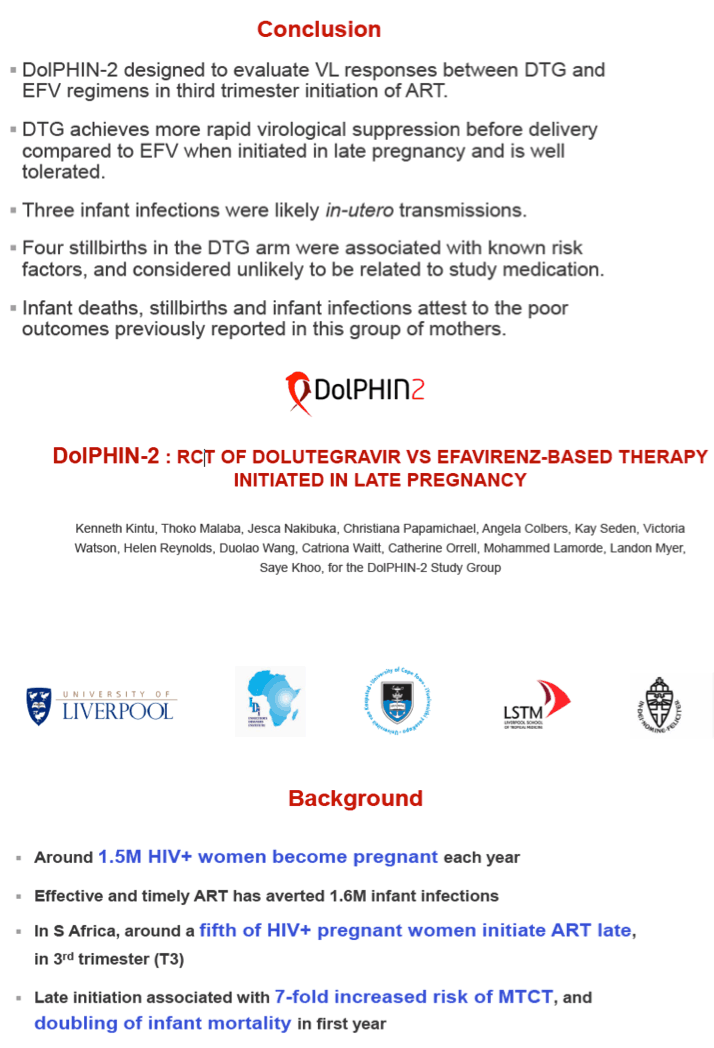
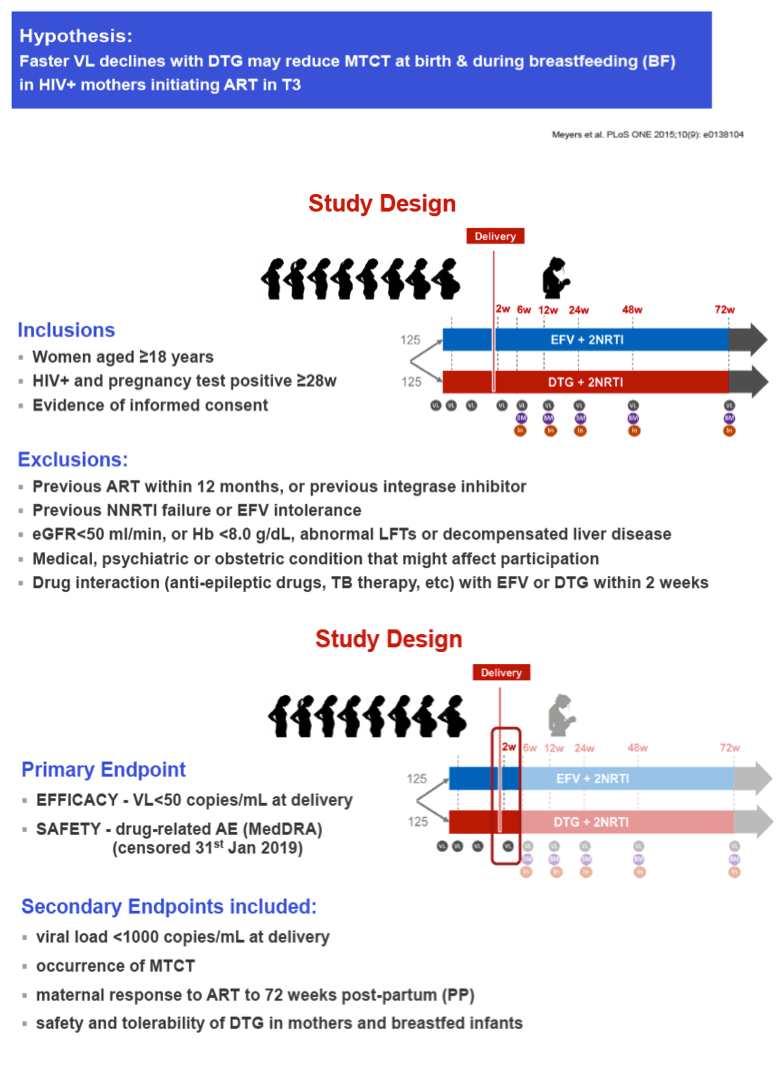
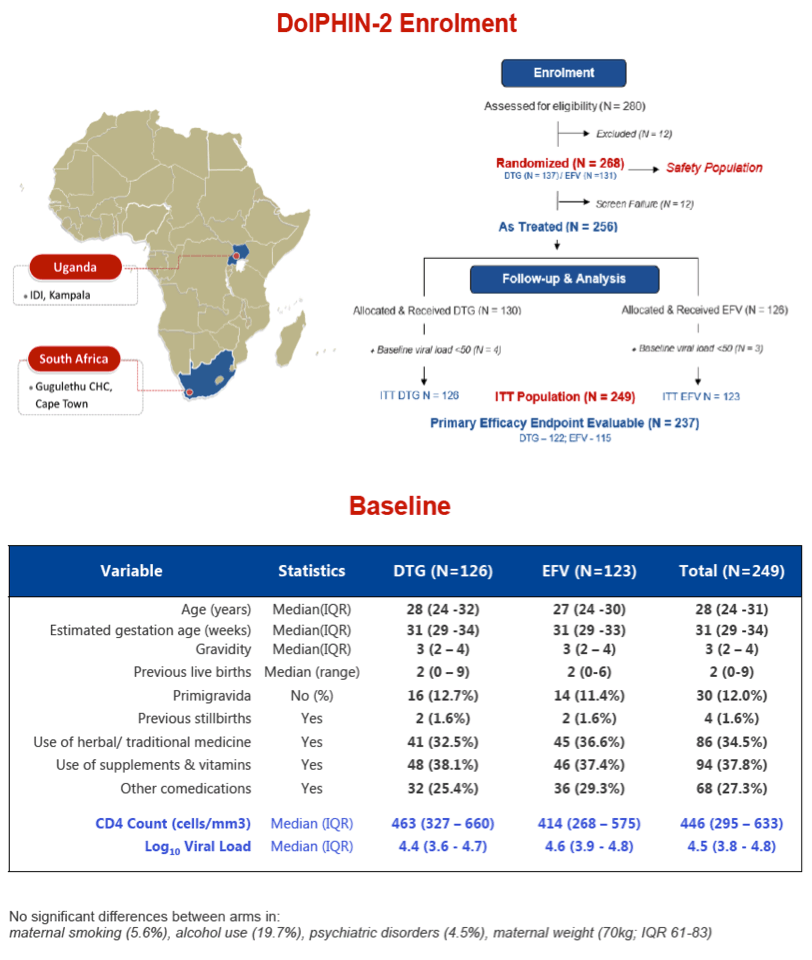
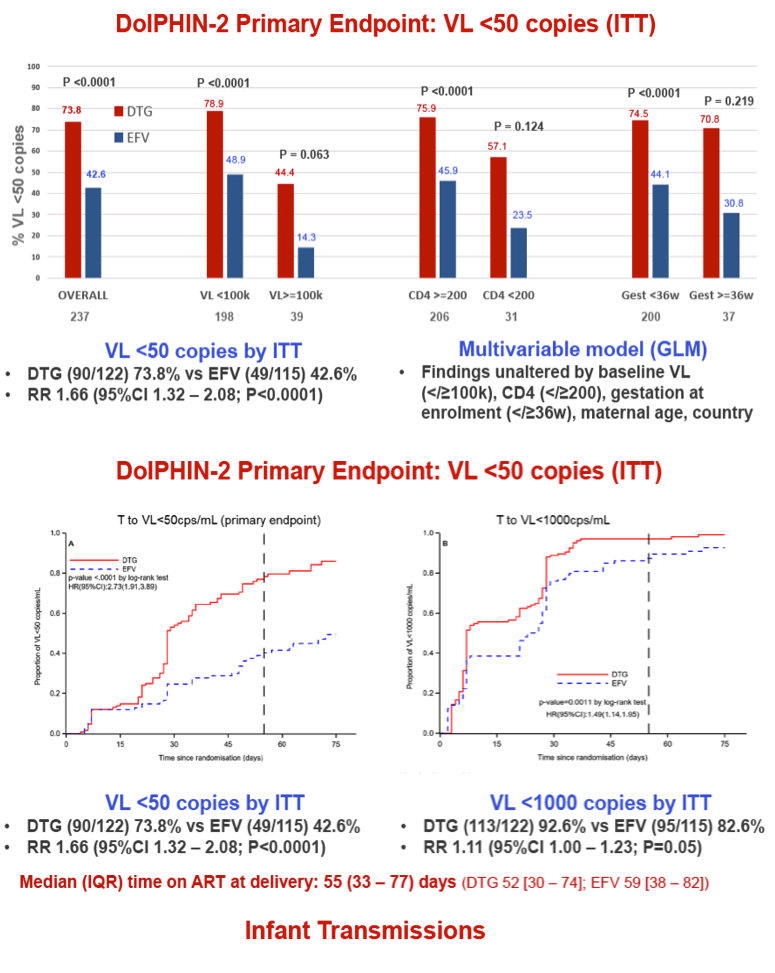
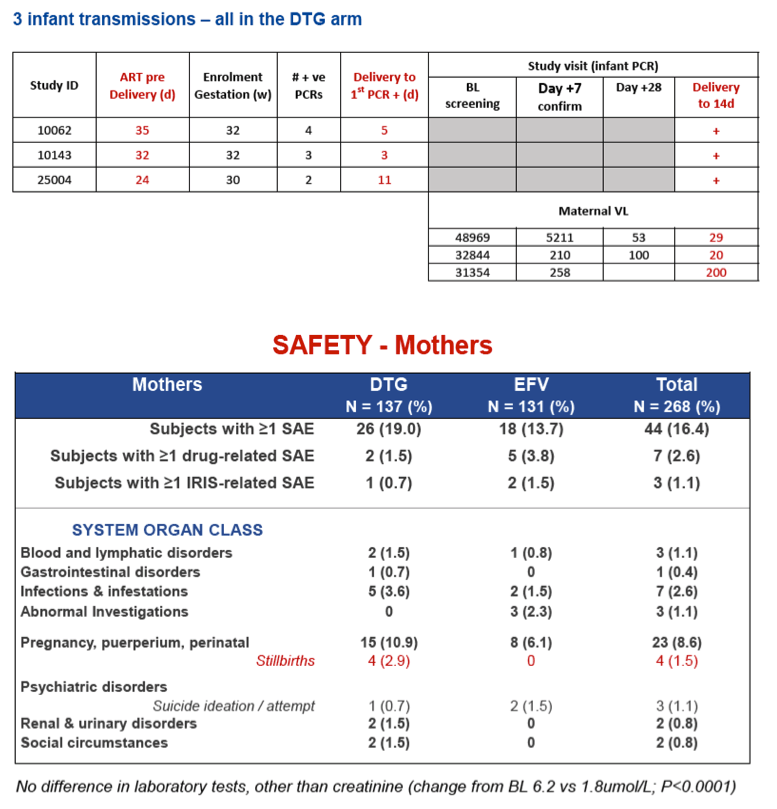
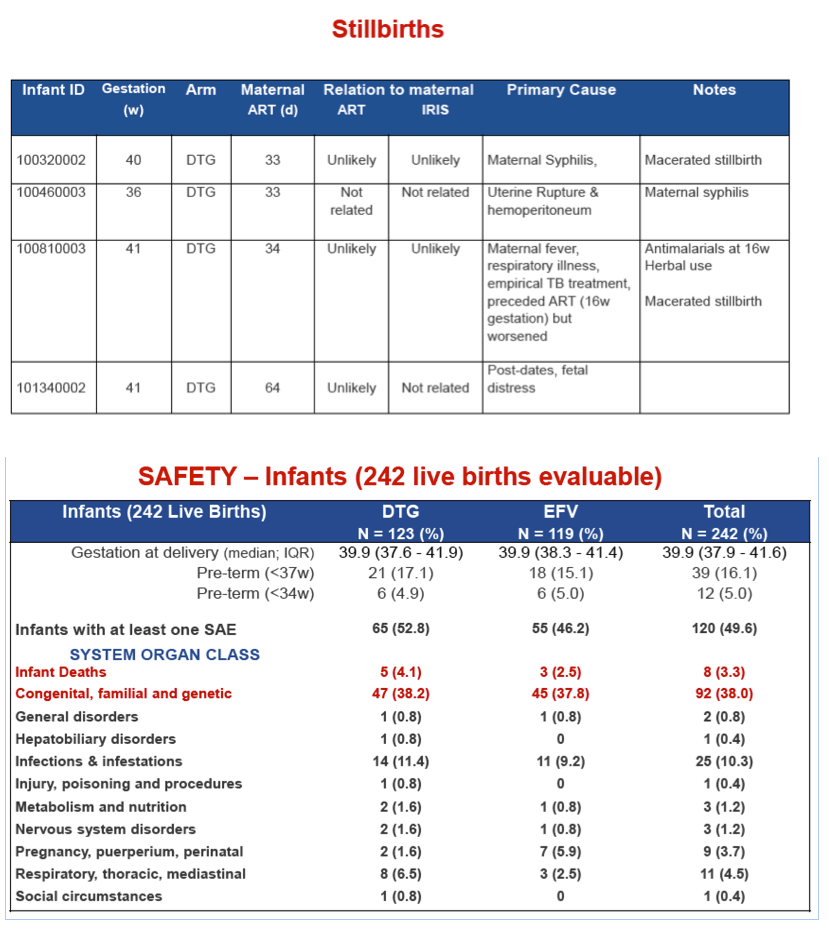
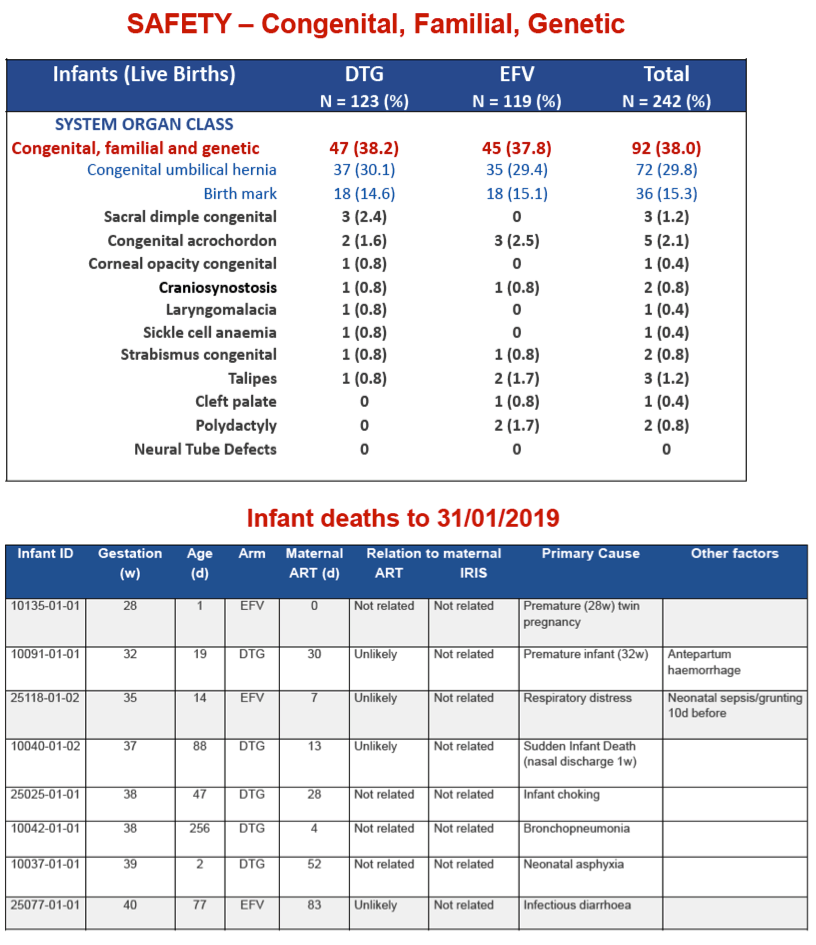
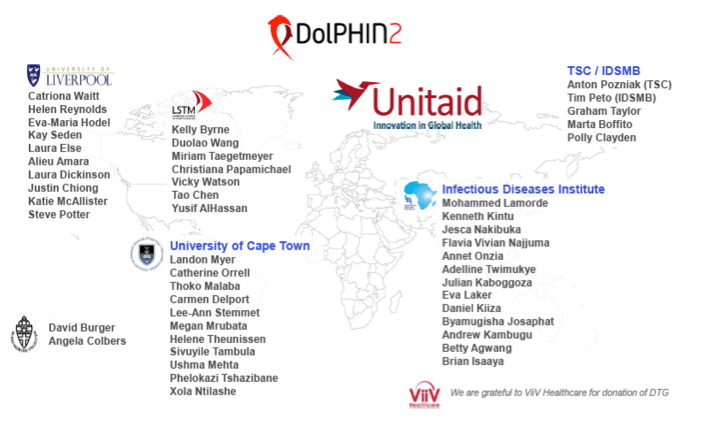
|
| |
|
 |
 |
|
|